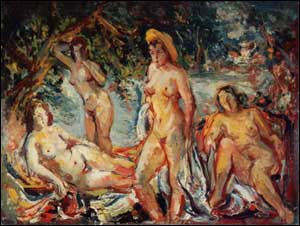

Image Info please click!


A FAMOUS AUSTRIAN PAINTER
(VIENNA, 1895-1975)

 |
 Image Info please click! |
 |
|
 |
PROF. WILHELM KAUFMANN A FAMOUS AUSTRIAN PAINTER (VIENNA, 1895-1975) |
 |
|
 |
 |
 |
|
|
Wilhelm Kaufmann's artistic talent was noticeable at a young age. Early on in his life, people could see that he had an strong interest in the arts. In his elementary school years, he made several drawings of his teachers and school mates. Later, he applied to the Royal Academy of Fine Arts in Vienna at an age of 16, where he was accepted as the youngest applicant, and was educated by Professor Rudolf Bacher. Due to his military service during World War I, where he was engaged in the Russian-Albanian front line from 1915 to 1918, he had to interrupt his education and work in fine arts. Afterwards he lived and worked in Vienna as self-employed artist, and was also a part of several artist groups who focused on organising collective exhibitions in Austria and abroad. During the 1920's, he joined the Sonderbund Österreichischer Künstler which was a group of innovative artists that included: Oskar Kokoschka, Anton Faistauer, Anton Kolig and Herbert Boeckl. In 1932 he became member of the Wiener Hagenbund. At this time Carl Fahringer, Georg Ehrlich, Josef Floch, Otto Rudolf Schatz and Felix Albrecht Harta were also celebrated artists in this organization. During the era of National Socialism, Wilhelm Kaufmann, ignored the sound advice of his friend Oskar Kokoschka, to leave Austria as soon as possible, and suffered dearly at the hands of the Nazi Regime. He was forced into hard labour in a factory, and he was excluded from his profession in the fine arts. After World War II, Wilhelm Kaufmann was acknowledged as an extraordinary artist. He received many honours and awards. He also was bestowed the title of Professor. His paintings were acquired by, and displayed, in various art museums, like the Vienna Albertina, the Historical Museum of Vienna, the Österreichische Galerie Belvedere, and the Niederösterreichisches Landesmuseum. One stunning floral painting was acquired by the king of Sweden. Wilhelm Kaufmann's unique style shows a large variety of themes, including paintings of landscapes, scenes of daily life, portraits, still life, nudes, wildlife, and sports.
His style is characterized as being very expressive with a unique perspective, and by the use of vivid colours.
|
|||